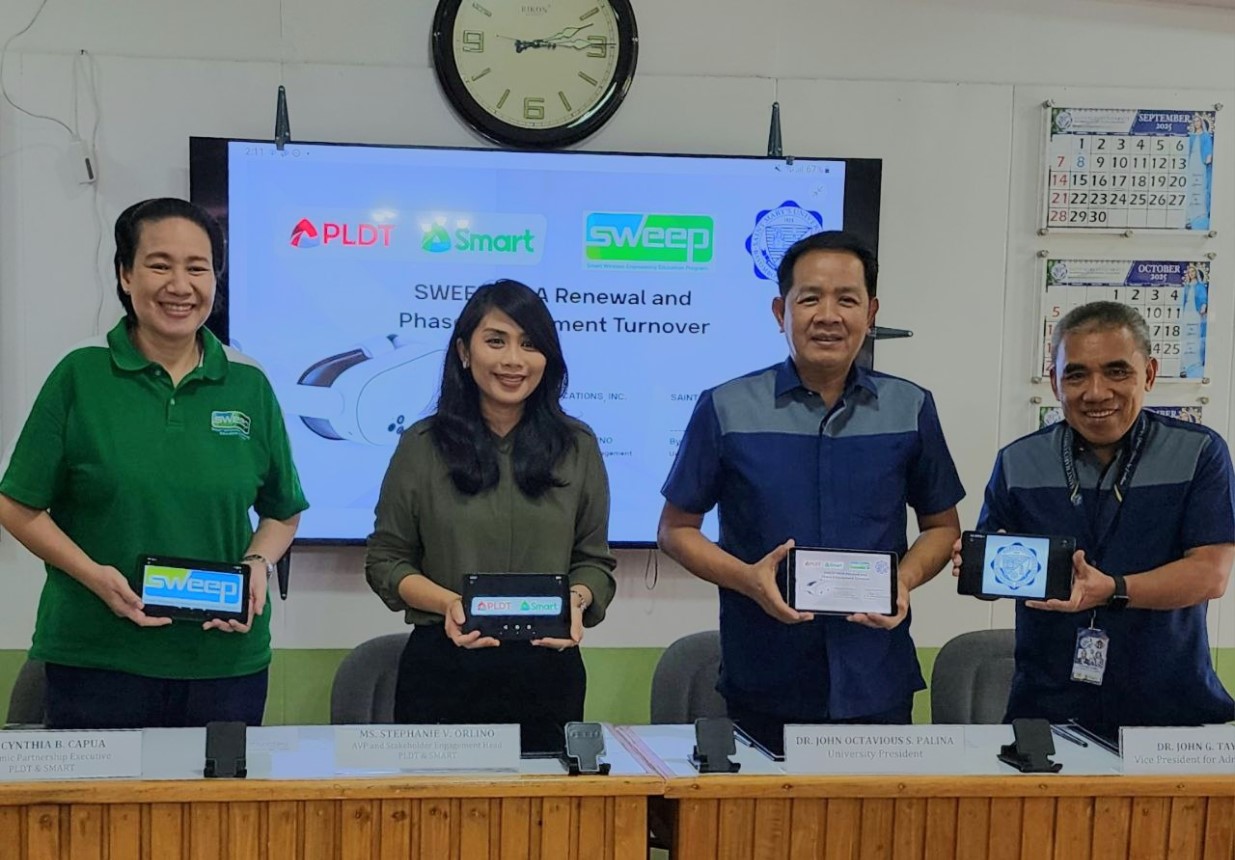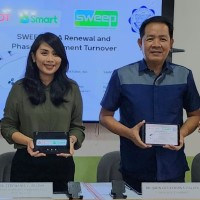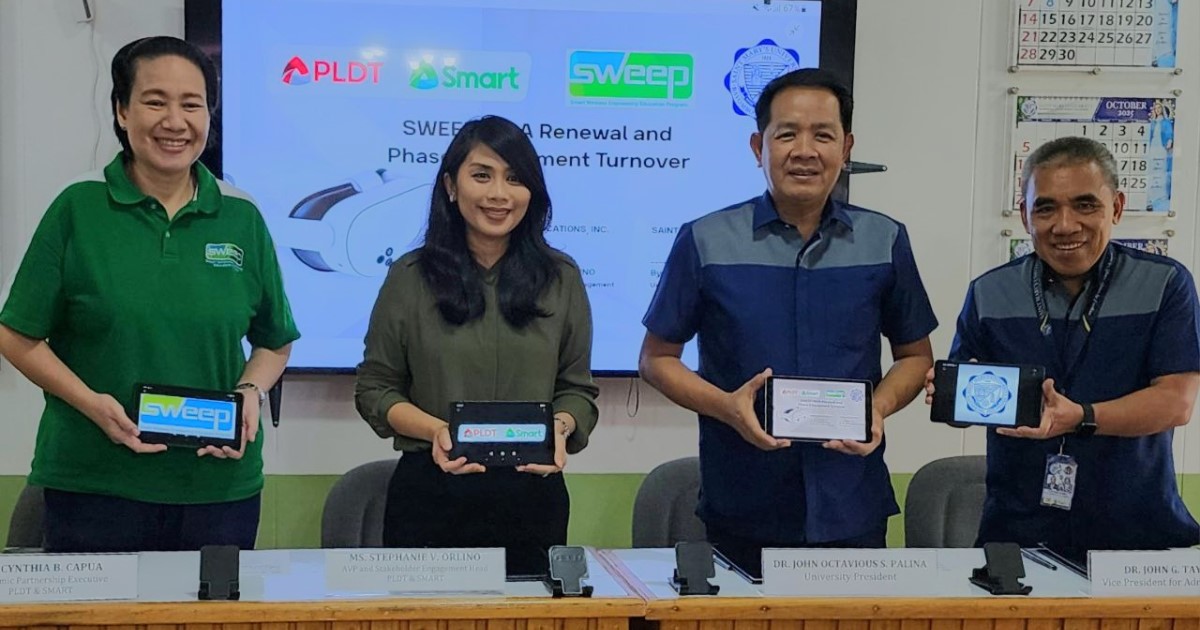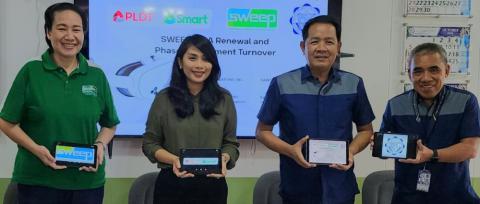
Saint Mary’s University (SMU) in the province of Nueva Vizcaya takes a leap forward to a future powered by Artificial Intelligence (AI) as it renews its partnership with Smart Communications, Inc. (Smart) through the Smart Wireless Engineering Education Program (SWEEP). As the country’s longest-running industry-academe collaboration, SWEEP helps schools develop industry-ready Engineering and IT graduates—and future technopreneurs.
“Our long-standing partnership with Smart is built on trust, commitment, and sustainability,” said Dr. John Octavious S. Palina, University President at SMU. “We’re excited to collaborate with Smart to broaden the horizons of our Engineering, Architecture, and IT students by learning about emerging innovations that will shape the future.”
SMU joined SWEEP in 2004, making it one of the program’s earliest adopters. It was also among the first schools to qualify for the pilot run of Innovation Generation, a grant program that nurtures student-led tech solutions.
Now entering Phase 5, SWEEP takes a deeper dive into advanced digital technologies—particularly Artificial Intelligence (AI)—that are driving the Fourth Industrial Revolution. Students and faculty will also explore the metaverse, extended reality, and network disaggregation.
To give SMU a head start, Smart conducted an AI bootcamp for faculty members of SMU’s School of Engineering Architecture and Information Technology (SEAIT). The session offered hands-on experience with AI-powered applications that can make classes more interactive, provide feedback to students, process data-driven insights and assist with administrative tasks.
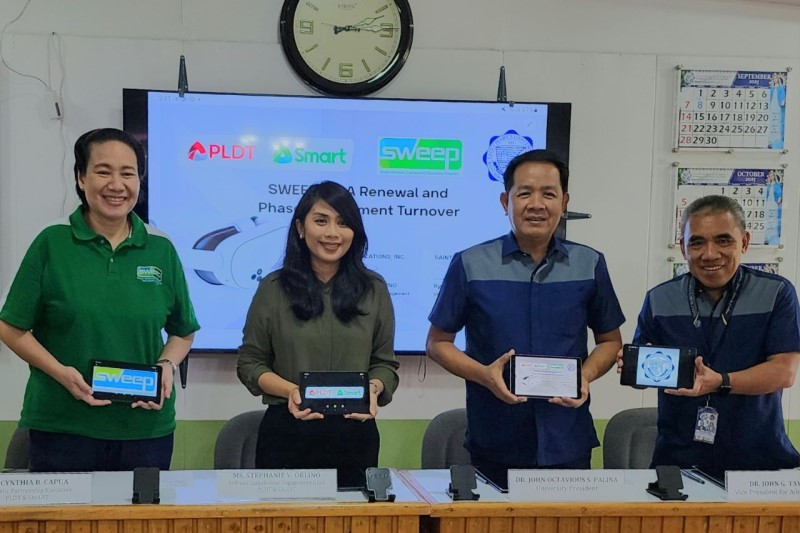
Cynthia Capua, Manager for Network Strategy and Engineering, Smart; Stephanie Orlino, AVP and Head of Stakeholder Engagement, Smart; Dr. John Octavious Palina, President, SMU; Dr. John Tayaban, VP for Administration, SMU
“I appreciate learning more about generative AI, gamified quizzes, and tools to create slides,” said Krby Zyryll Perez, an instructor at the SMU SEAIT. “AI is a very useful tool that can help us prepare lessons and review the day’s discussion.”
Phase 5 also gives Marian students access to extended reality technologies, including Virtual Reality (VR), where users navigate a computer-generated environment; Augmented Reality (AR), which superimposes digital elements onto the real world; and Mixed Reality (MR), which allows users to interact with virtual objects in physical spaces.
Marian future engineers and technopreneurs will also explore the metaverse—a virtual space where users interact through 3D avatars. Touted as the next phase of the internet, the metaverse offers immersive and interactive digital environments beyond flat screens.
Another key topic is Network Disaggregation, which means breaking down traditional, all-in-one network systems into smaller, modular components. This approach allows organizations to mix and match hardware, software, and network functions from various providers, making systems more flexible and efficient.
“For the past 21 years, Smart has been proud to share with SMU our SWEEP journey that started with an introduction to engineering in a telco environment, followed by wireless broadband, development of applications for mobile phones and cloud technology, the shift to 5G and the advent of the Internet of Things (IoT), and Next Generation Access and Transport,” said Stephanie V. Orlino, AVP and Head of Stakeholder Engagement Team. “We look forward to continuing our collaboration with SMU in preparing future tech mavericks for a rapidly evolving digital world.”
Since 2003, SWEEP has helped train over 41,095 faculty members and students including the admission of more than 4,000 individuals to the PLDT Group’s internship programs. It has also produced six startups. Smart has also welcomed more than 1,130 graduates of partner-schools into the company.
